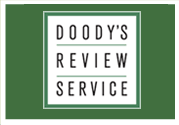|
|
|
eBook/Digital Version available from:
|
 Score: 91
Score: 91 |
 |
| Pandemics, Publics, and Politics: Staging Responses to Public Health Crises |
 |
ISBN: 978-9811328015,
91 pages,
Hard Cover
ISBN-10: 9811328013 |
 |
| Copyright: |
2019 |
 |
| Edition: |
1st |
 |
| Editor: |
Bjorkdahl, Kristian; Carlsen, Benedicte |
 |
|
Specialties:
|
Public Health |
 |
| Publisher: |
Springer |
 |
| Imprint: |
Palgrave Macmillan |
 |
| List Price: |
$69.99 |
 |
| Google: |
|
|
 |
|
|
|
|
At A Glance
|
Pandemics are potentially very destructive phenomena, and for that reason, they both fascinate and frighten us. And because they are shot through with uncertainty, they often become sites of contestation and conflict. This book presents research on the 2009 pandemic and other public health crises in an attempt to describe and analyze the distinctive challenges that such diseases pose today. Thanks to vaccines, more reliable provision of medical services, more effective means of communication, and a more educated public, some argue we will not see a new Black Plague .." or even Spanish Flu .." in our time. Today we face new challenges, however, which can both enable diseases to reach pandemic scales and affect our ability to enact an appropriate response. Those include fragmentation of media, tribalization of ...knowledge regimes,... the increasingly troubled status of scientific and political expertise, growing cross-continental mobility, as well as the globalization and commercialization of pandemic response systems. These distinctive complexities make the need to stage public action in response to pandemics and other public health crises a crucial problem, on which thousands of human lives hinge. This volume consists of a handful of social science and humanities studies of precisely such complexities, and thus offers a much-needed supplement to existing research on pandemics and pandemic response.
|
|
Reviewer:
|
Margaret Gladman,
DNP, BSN
(Rush University Medical Center)
|
 |
|
Range
|
Question
|
Score
|
| 1-10 |
Are the author's objectives met? |
8 |
| 1-10 |
Rate the worthiness of those objectives. |
10 |
| 1-5 |
Is this written at an appropriate level? |
5 |
| 1-5 |
Is there significant duplication? (1=significant, 5=insignificant) |
4 |
| 1-5 |
Are there significant omissions? (1=significant, 5=insignificant) |
4 |
| 1-5 |
Rate the authority of the authors. |
5 |
| 1-5 |
Are there sufficient illustrations? |
5 |
| 1-5 |
Rate the pedagogic value of the illustrations. |
N/A |
| 1-5 |
Rate the print quality of the illustrations. |
N/A |
| 1-5 |
Are there sufficient references? |
5 |
| 1-5 |
Rate the currency of the references. |
4 |
| 1-5 |
Rate the pertinence of the references. |
4 |
| 1-5 |
Rate the helpfulness of the index. |
4 |
| 1-5 |
If important in this specialty, rate the physical appearance of the book |
N/A |
| 1-10 |
Is this a worthwhile contribution to the field? |
10 |
| 1-10 |
If this is a 2nd or later edition, is this new edition needed? |
N/A |
|
 |
|
Reviewer:
|
Margaret Gladman,
DNP, BSN
(Rush University Medical Center)
|
 |
|
Description
|
| The focus of this book is on the intersection between the public health response to a pandemic from an epidemiological perspective and the involvement of the media in communicating this information to the general public. It is centered on social science and humanities studies. |
 |
|
Purpose
|
| The purpose is to explain the need for an interdisciplinary response to pandemic beyond those disciplines traditionally included in the public health field. The book discusses previous public health crises and offers suggestions for future responses. This is a worthy contribution to the field. |
 |
|
Audience
|
| Although there is no stated target audience, this book is suitable for anyone working in public health, particularly those who play a role in responding to public health crises. |
 |
|
Features
|
| This book provides an overview of pandemics and how that classification is designated. It includes a productive discourse around the uncertainty of pandemics and how that influences the way in which information is communicated to the public. The detail provided on the different things to consider when deciding how and what to communicate to the general public during a pandemic is very valuable. Each chapter is accompanied by several references that can guide further reading. |
 |
|
Assessment
|
| This book brings a unique perspective and highlights the importance of health communication during a public health crisis. It is relatively short, so the information is concise and accessible. |
 |
|
|
|
|
|
|
|
